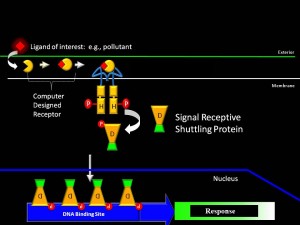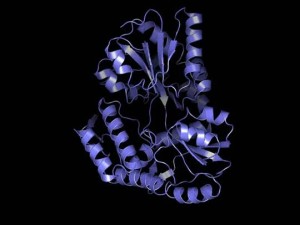Signal Transduction is how organisms move information about. We are used to information being moved with electricity such as from a plug or battery into a computer. We are also used to information being moved by waves such as in a cell phone or television. Living organisms move information by signal transduction.
One way living organisms transmit signals is with high energy phosphate bonds. Phosphate bonds move between proteins and in doing so information is transmitted in the cell. One of the best studied signal transduction systems uses histidine kinases and phospho-relay among various components. We have used histidine kinase system to form a synthetic signal transduction system. By linking this to computationally designed input, we have a computer designed detection technology enabled in a plant.
- Computer designed receptors are targeted to the plants apoplast.
- When the computer designed receptors bind their ligand they develop high affinity for the extra-cellular domain of a chimeric molecule.
- The chimeric molecule has an interior kinase domain that is then activated.
- The kinase sends a high energy phosphate signal to a signal receptive nuclear translocation protein.
- This protein translocates to the nucleus and activates transcription to produce a response.

- Synthetic Signal Transduction System

